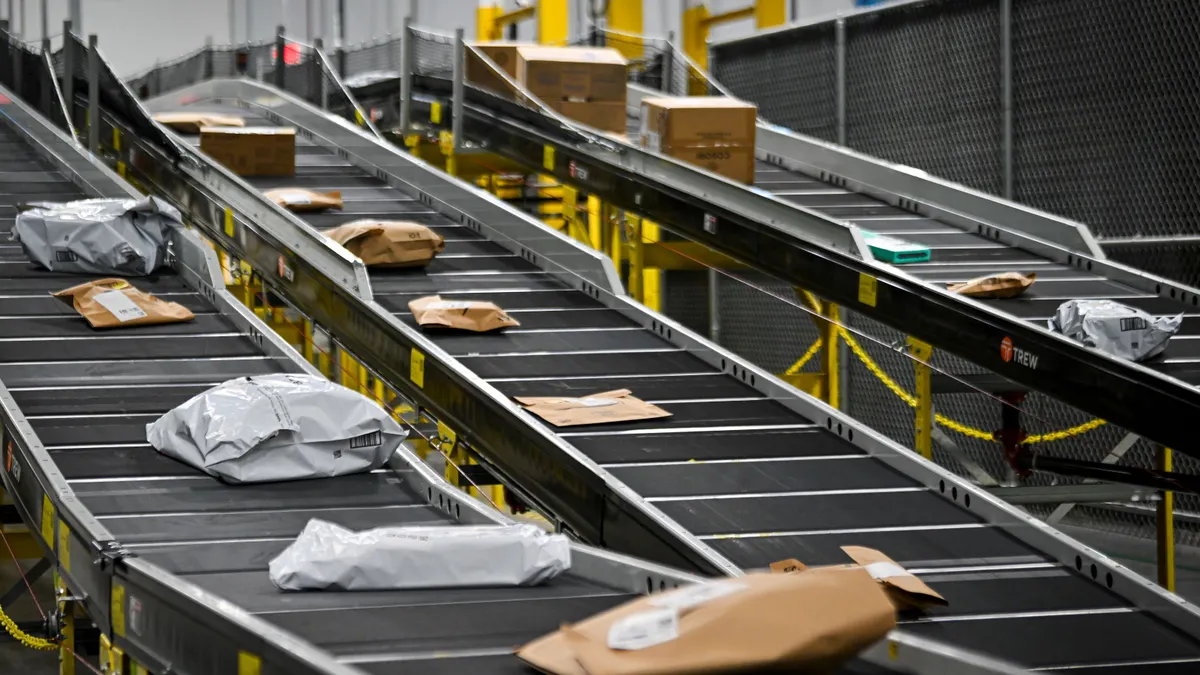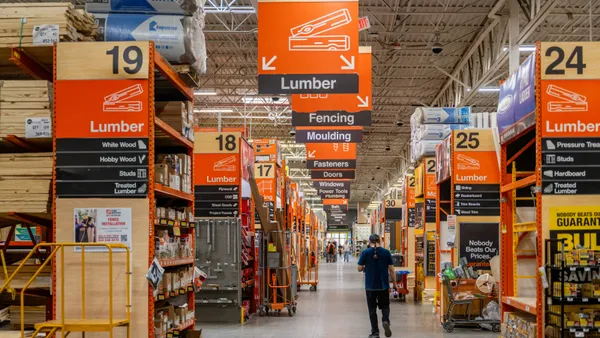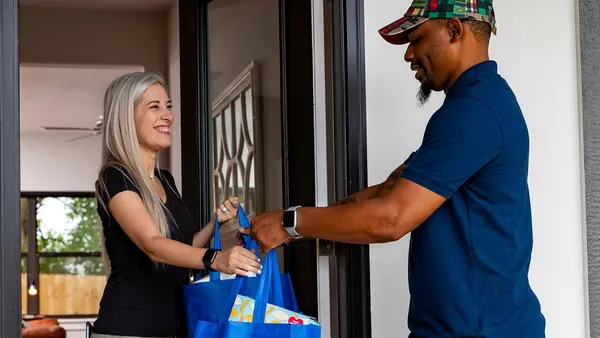Dive Brief:
- Target is expanding its next-day delivery coverage to more markets, the retailer announced Tuesday.
- By the end of October, Target customers in the top 35 U.S. metro areas will be able to receive their online orders by the following day. The company will expand into over 20 additional metro areas in 2026, including Cincinnati, Salt Lake City and Portland, Oregon.
- Most items are eligible for next-day shipping, and the service is free for orders over $35, orders from Target Circle 360 members or purchases using Target's Circle Card. Otherwise, next-day delivery is available for $5.99.
Target expands next-day delivery coverage
Dive Insight:
Target is pushing to expand its next-day delivery coverage to meet growing consumer demand, said Gretchen McCarthy, EVP and chief supply chain and logistics officer, in a company Q&A. Competitors such as Walmart and Amazon have noted higher customer order rates are key drivers behind their own initiatives to accelerate shipping speeds.
Some of Target's next-day delivery markets have order cutoff times as late as 6 p.m., which McCarthy credited to advancements in the retailer's routing and forecasting technology. In determining which areas to launch in, Target focused on locations with high or growing fast shipping demand and enough company assets to enable cost-effective operations.
"That cost factor is key: Our digital business is profitable and as digital demand continues to rise, our supply chain needs to keep enabling that growth in ways that are good for Target’s bottom line," McCarthy said.
Beyond faster shipping, Target is evolving other aspects of its supply chain amid a wider effort to turn around slumping sales. For example, the retailer is tweaking its fulfillment strategy to help strengthen the in-store experience.
While Target's brick-and-mortar locations will continue to fulfill the majority of its online orders, McCarthy said the fulfillment adjustments mean some stores across its network will either take on added shipping volume, fewer shipments or none at all. Locations scaling back on fulfillment "can reinvest that time into the walk-in guest experience or same-day services, leading to more consistent store environments across the network," she said.
Target has been piloting the strategy in Chicago since May, concentrating more shipping volume into six stores while relocating shipping capabilities out of 18 locations, according to McCarthy. The initiative has resulted in a lower fulfillment cost per unit locally while benefiting delivery speeds.
"Results so far show that we’re almost a full day faster with shipping and we’ve been able to offer next-day delivery on five times more of the local shipping demand," she said. "That increase of promise speed is leading to incremental sales gains, which we saw almost immediately in certain categories like baby and household cleaning."
Target is now launching components of the strategy throughout the U.S. based on local demand and needs. The company is currently concentrating shipping operations within select stores in 10 other markets while "transitioning them out of many stores across 36 markets," according to McCarthy.















